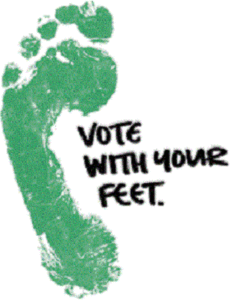
A draft of the article I am writing on “How Judicial Review could Help Empower people to Vote With Their Feet” was posted recently to SSRN. This article is part of an Institute for Justice symposium on the subject of “Does the Will Of The People Exist?” Here is the link to the article. This is the abstract
Since the 1970s, the critics of judicial reviews have maintained that they hinder the will to the people expressed in laws and regulations made by democratically elected officials. They argue that it shouldn’t be used at all, but should be limited. This argument assumes that voting at the ballot box is the only way to express political freedom. The people elect their government representatives and decide which government policies they want to follow. In order not to infringe on democracy, it is important that judicial review be restricted, or eliminated completely. The Article refutes that notion and suggests that foot voting is a better method of expressing political choices than using ballot boxes. It strengthens the argument for strong judicial reviews in various areas.
International migration allows people to vote by deciding where they want to reside within the federal system. They can also choose which jurisdiction in their locality in order for them be able make decisions in private sectors. Judicial review can improve any one of these three options. Foot voting allows individuals to choose from a variety of policies, rather than a single collective will. This allows for more people living under the policy they choose and decreases the impact on minorities.
This Article’s Part 1 summarizes the benefits of using foot voting instead of ballot box voting to make a political decision. Particularly, foot voting gives individuals the ability to make more informed decisions and has a greater chance of having a significant impact on the policies that they decide to live by. People with minorities have more options. Part II provides an overview of all three forms of foot-voting. Part III discusses how judicial reviews can enable foot voting within federal systems by applying structural constitutional limitations on federal government power. Part IV discusses how judicial review may enhance foot vote in both public and private sectors by protecting individual rights, making foot voting more practical and efficient. The final part of Part V focuses on how international migration can improve foot voting.
When deciding the level of constitutional review, foot voting must not be the only consideration. This is not a trivial issue. It’s often overlooked when discussing the role and function of the judiciary as a democracy.
This article is a continuation of previous work I did on political ignorance and countermajoritarian difficulties, as well as parts from my book. You are free to move: Voting by foot, migration, and political freedom. The piece will probably need to be revised several times before it is published. Therefore, I am looking forward to receiving comments from other scholars and experts.
